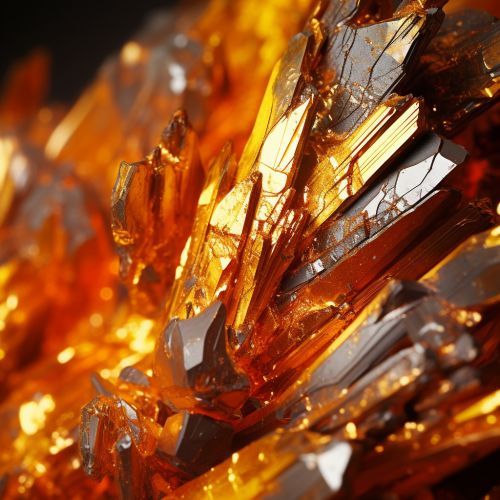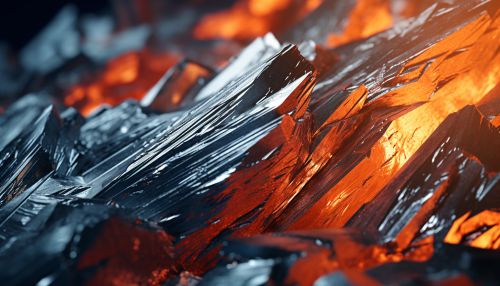Cadmium
Introduction
Cadmium is a chemical element with the symbol Cd and atomic number 48. This soft, bluish-white metal is chemically similar to the two other stable metals in group 12, zinc and mercury. Like zinc, it prefers oxidation state +2 in most of its compounds and like mercury, it shows a low melting point compared to transition metals. Cadmium and its congeners in group 12 are often not considered transition metals, in that they do not have partly filled d or f electron shells in the elemental or common oxidation states.
History
Cadmium (Latin cadmia, Greek καδμεία meaning "calamine", a cadmium-bearing mixture of minerals, which was named after the Greek mythological character Cadmus, the founder of Thebes) was discovered simultaneously in 1817 by Friedrich Stromeyer and Karl Samuel Leberecht Hermann, both in Germany, as an impurity in zinc carbonate.
Characteristics
Cadmium is a soft, malleable, ductile, bluish-white divalent metal. It is similar in many respects to zinc but forms complex compounds. Unlike most other metals, cadmium is resistant to corrosion and is used as a protective plate on other metals. As a bulk metal, cadmium is insoluble in water and is not flammable; however, in its powdered form it may burn and release toxic fumes.
Production
Cadmium is primarily found in small quantities in zinc ores, such as sphalerite (ZnS). Greenockite (CdS), the only cadmium mineral of importance, is nearly always associated with sphalerite. Therefore, cadmium is produced mainly as a byproduct from mining, smelting, and refining sulfidic ores of zinc, and, to a lesser degree, lead and copper.
Applications
Cadmium is used in many types of equipment, including in rechargeable nickel-cadmium batteries, in PVC as a stabilizer, in pigments, coatings, and plating, and in nuclear reactors as a neutron absorber. Despite its versatile applications, this element has significant toxic effects on humans.
Biological Role
Cadmium has no known beneficial function in higher organisms, but a cadmium-dependent carbonic anhydrase has been found in marine diatoms. The average concentration of cadmium in Earth's crust is between 0.1 and 0.5 parts per million (ppm). It was once used as a pesticide, which has left a residual cadmium concentration in agricultural soils.
Toxicity
Cadmium is an extremely toxic industrial and environmental pollutant classified as a human carcinogen: Group 1. It is generally found in the environment combined with other elements such as oxygen (cadmium oxide), chlorine (cadmium chloride), or sulfur (cadmium sulfate, cadmium sulfide). The divalent ion of cadmium (Cd2+) is of particular concern because of its high toxicity; in certain forms and concentrations, it may cause severe health effects.
Environmental Impact
Cadmium is released into the environment in several ways. This includes through the use of phosphate fertilizers, detergents, fossil fuel combustion, and disposal of metal wastes, plastic, and rechargeable batteries. The largest source of cadmium emissions into the air is the burning of fossil fuels, such as coal and oil, and the incineration of municipal waste.
See Also
- Zinc
- Mercury
- Sulfidic ores
- Nickel-cadmium batteries
- Cadmium oxide
- Cadmium chloride
- Cadmium sulfate
- Cadmium sulfide


